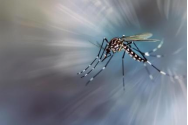The transmission of several mosquito-borne diseases has been under close scrutiny in recent years, including West Nile virus, dengue fever and eastern equine encephalitis (EEE). These viruses are transmitted through the bite of infected mosquitoes, and cases are on the rise, posing a growing threat to public health.
West Nile Virus (WNV), which was first detected in the Western Hemisphere in 1999. While most infected people will not exhibit symptoms, about one in five will experience fever, headache, body aches and other flu-like symptoms. In rare cases, the disease develops into more severe forms, such as West Nile encephalitis, which may be fatal.
Dengue fever predominantly affects tropical and subtropical regions, with the World Health Organization (WHO) estimating that there are 390 million dengue infections annually, with 96 million manifesting clinically. Symptoms of dengue fever typically include fever, rash, nausea and joint pain. While the disease is rarely fatal, it will be debilitating.
Compared to the relatively common West Nile virus and dengue fever, EEE is very rare, with only a few cases reported each year in the U.S., occurring primarily in the eastern and Gulf Coast states. Although most infections are mild or asymptomatic, severe cases can progress to life-threatening encephalitis, with a mortality rate of about 30%.
It is critical to differentiate between these mosquito-borne diseases because they may exhibit similar symptoms but vary greatly in severity and treatment. West Nile virus and dengue fever generally carry a lower risk of death, while EEE carries a much higher threat and a greater need for immediate medical attention.
Prevention of mosquito-borne diseases requires a combination of personal protective measures and community-level control. Personal protective measures include the use of insect repellents, wearing long-sleeved clothing and long pants and staying indoors when mosquitoes are most active. In addition, communities reduce mosquito populations by spraying insecticides. To improve prevention, early detection and surveillance are critical. Implementing an early detection system allows for the rapid identification and confirmation of cases of these diseases so that suspected cases can be reported to the health department in a timely manner, thus facilitating timely response and intervention.
Fall has arrived, but mosquito season is not over. As mosquito-borne diseases continue to spread, it is important for the public to be aware of the differences between these viruses, the symptoms, and the appropriate measures to protect themselves and their communities.
